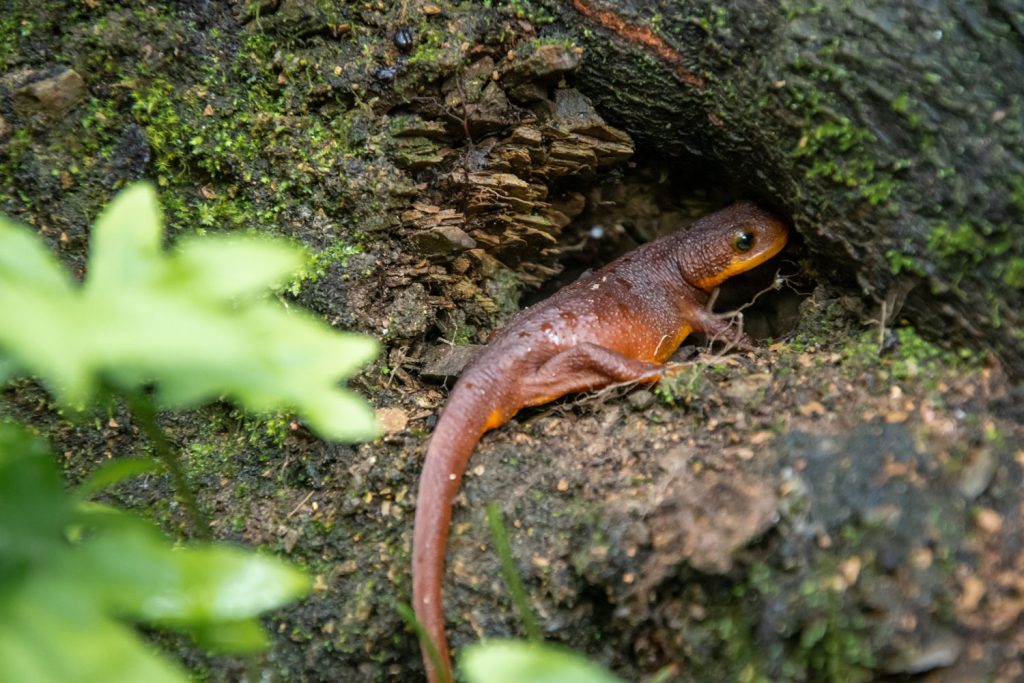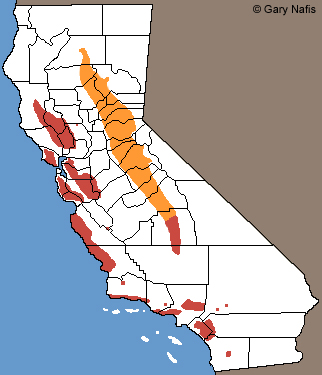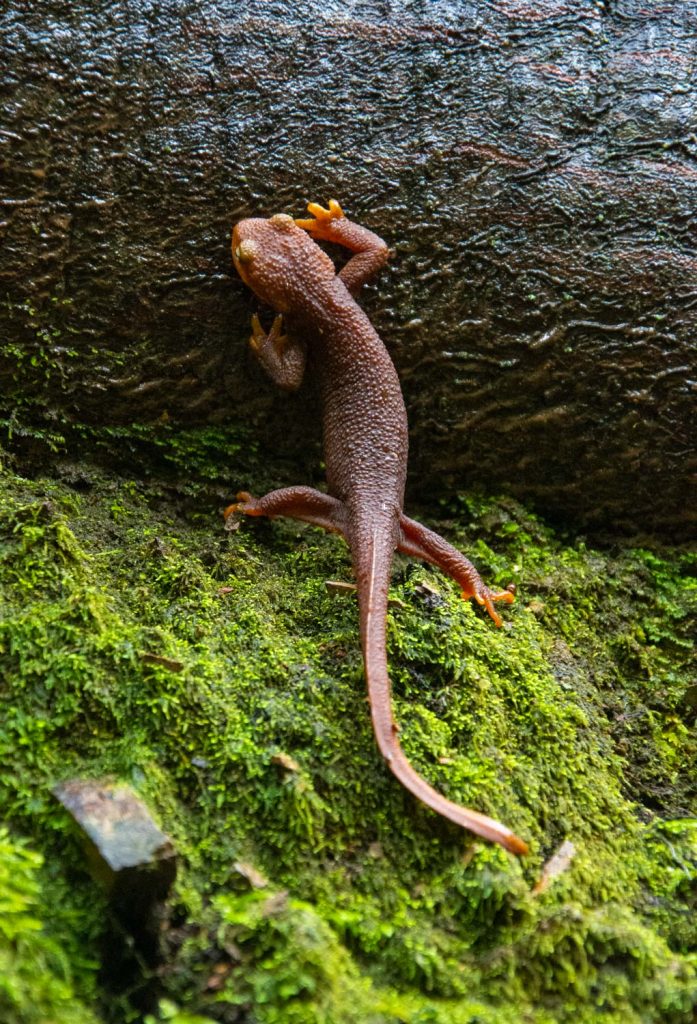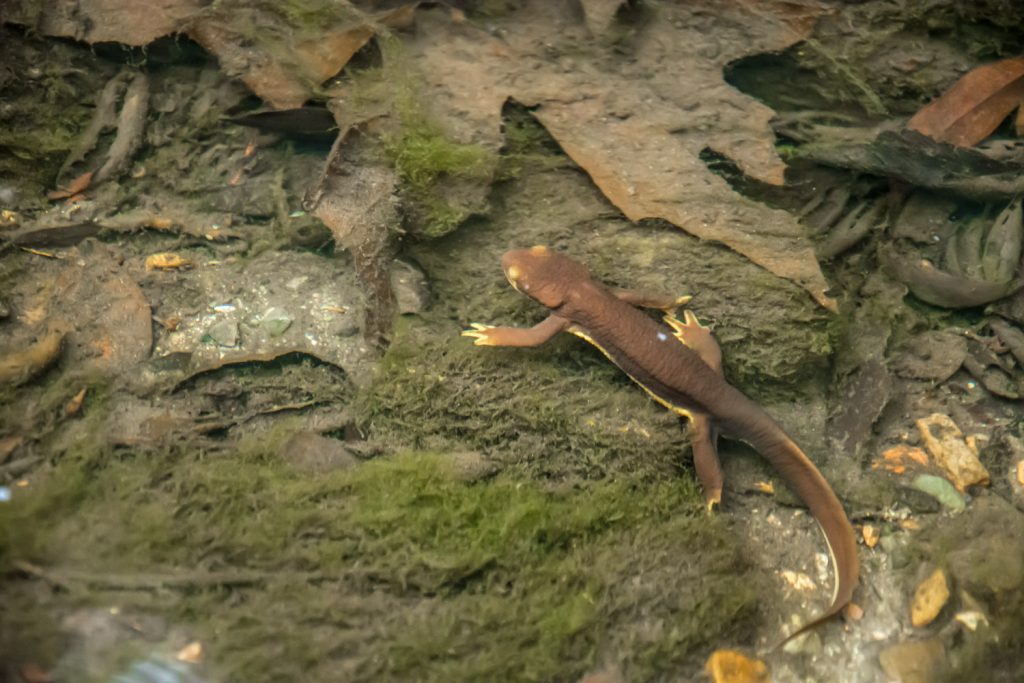Taricha torosa
- Species of Special Concern – California Department of Fish and Wildlife

The California newt is part of the Salamandriae family that consists of true newts and salamanders. It’s scientific name, Taricha torosa, characterizes this species as “full of muscle” and “fleshy”. This speaks to the newt’s stocky appearance and its rough, grainy skin that varies in color from yellowish-brown, dark brown, and reddish brown on it’s back and pale yellow to bright orange below. Adults can range from 2 – 3.5 inches from snout to vent (the opening of the cloaca at the base of the tail) and 5 – 8 inches in total length.
Distribution and Habitat
As the name implies, these newts are endemic to California and they primarily occur along the coast and in the Coast Ranges from Mendocino County to San Diego County, including some pockets in the Sierra Nevada. They prefer wet forests, specifically oak woodlands, chaparral and grasslands. In the Los Padres National Forest, California newts can be found in and around streams in the Santa Ynez Mountains and Santa Lucia Mountains.

California newts are mostly terrestrial and become aquatic during their breeding season in the winter and spring. Because they rely on ponds and streams for breeding, California newts depend on rainfall and steady stream flows to provide healthy habitats for reproduction. Adult newts can live longer than 20 years and therefore are considered a useful benchmark for studying the effects of climate change on other species.
Diet and Behavior

This species eats mostly small invertebrates including worms, snails, slugs, sowbugs and insects. They are also known to consume amphibian eggs and larvae including those of their own species. California newt larvae feed on small aquatic invertebrates and decomposing organic matter.
The bright coloring of the California newt is an indicator to other species of its poisonous nature. These amphibians produce poisonous skin secretions that contains a potent neurotoxin, tetrodotoxin, which is the same toxin found in pufferfish and the harlequin frog. California newts are only dangerous to humans upon ingestion or if their secretions come in contact with a cut on the skin. A species of garter snake has proven a tolerance to this neurotoxin and sustains as a predator of the California Newt.
Conservation Issues
Southern Californian populations of California newts suffer severe population declines in periods of extreme drought. Because of their reliance on healthy streams and ponds for breeding, they are highly impacted by lack of rainfall. Breeding areas have also been destroyed by development and can be impacted by sedimentation caused by wildfire and agriculture.

The introduction of invasive species such as crayfish and mosquito fish ( which were introduced to control mosquito populations) to certain California streams threaten California newt populations in the loss of their young to new predators.
California newts are currently listed as a California Species of Special Concern by the California Department of Fish and Wildlife. In 2013 they were protected from take with a sport fishing license.






